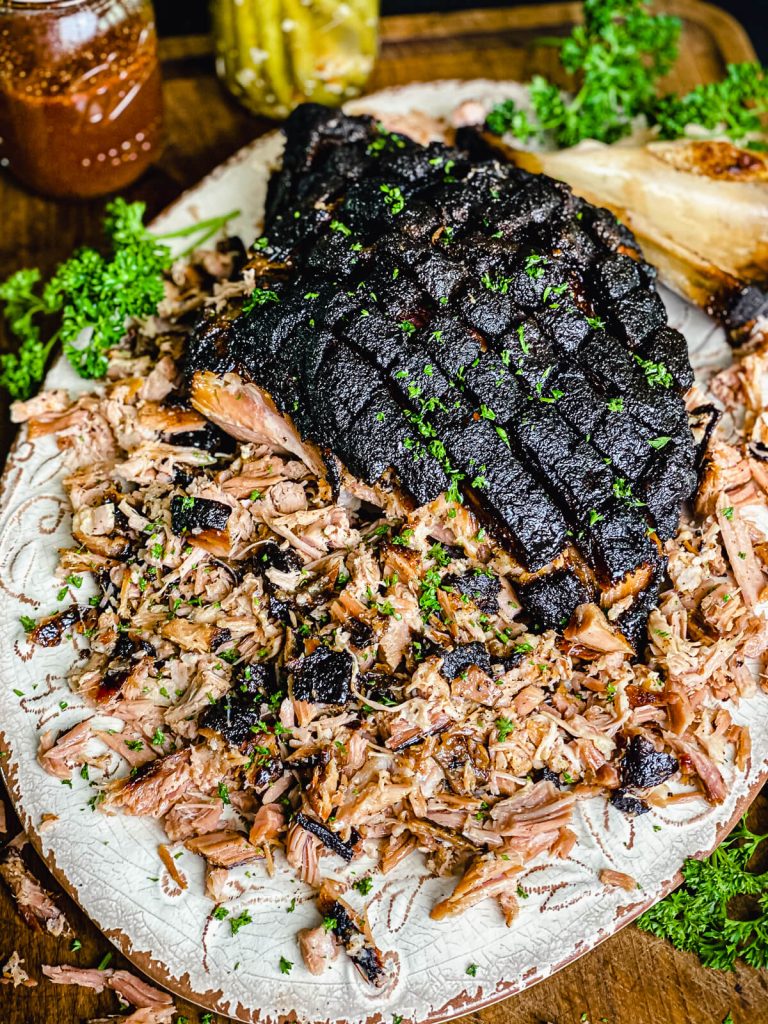A common misconception is that if you don’t have a dedicated smoker, you can’t smoke meat. While having a smoker is nice, it’s not always possible. Alternative ways, like this rotisserie pork shoulder, are a must. In this blog I’m going to teach you how to smoke pork butt on the grill.
For this recipe you can use just about any charcoal grill you have. Just follow the techniques outlined here to set your grill up like a smoker.
You’ll be turning out an amazing smoked pork butt, worthy of inviting friends and family over for the best smoked pulled pork sandwich they’ve ever eaten.
There are a number of pulled pork recipes online, offering different flavor profiles. For this recipe, I’m going with a traditional Eastern Carolina style. Like many of my “how to” guides, it’s the technique and smoking process that’s important here.
I’ll provide my favorite homemade BBQ rub recipe, but if you have a rub you like, use that. I also absolutely LOVE the Eastern Carolina mop sauce used for this recipe, and highly encourage you to use it. But again, feel to use the BBQ sauce of your choice, or none at all.
Jump to RecipeHow To Set Your Grill Up For Smoking
A traditional offset smoker uses a fire box, which is offset from the cooking chamber. This allows smoke and heat to transfer into the cooking chamber without exposing the food to direct heat.
This is the ideal condition for cooking low and slow. It prevents meat from burning and drying out from direct heat exposure, while gently cooking the food and introducing that sweet smoke that’s so desirable.
This setup can be accomplished on most charcoal grills as well. Not to the extent of an offset cooker, but pretty close.
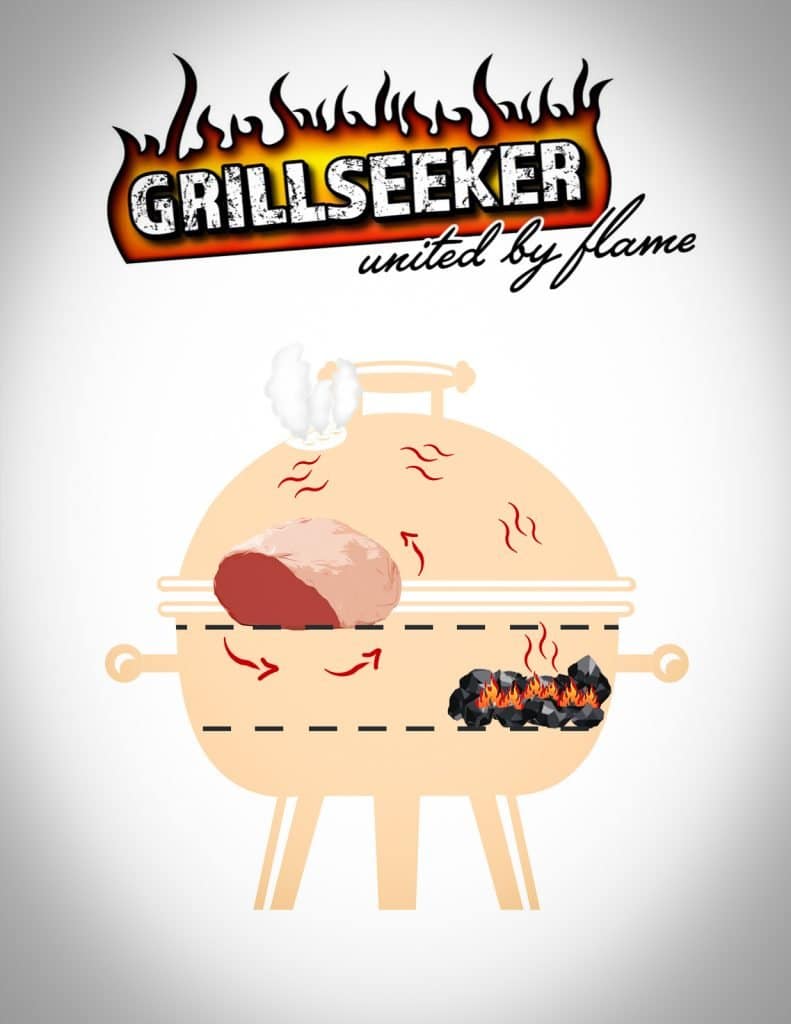
Setting your charcoal grill up for smoking can be done a few ways, the most popular being the cross flow method. This is done by building your coal bed on one side of the grill, and placing the meat on the other side over indirect heat.
It’s important to position the lid with the vent over top of the meat, so the smoke travels across the meat before exiting the grill.
Do You Smoke Pork Butt With The Fat Cap Up Or Down?
In short, it depends on the cooker. There is no definitive answer, despite what the “experts’ might say. The important part is to have the fat cap towards the heat source, protecting the meat. Depending on the cooker, the direction of the heat will change.
For example, when using a Kamado or kettle style grill with the cross flow method, I recommend fat cap up. In this case, the meat is cooking mostly with heat reflected from the grill’s lid. So, positioning the fat cap up will protect the meat, and render as it cooks.
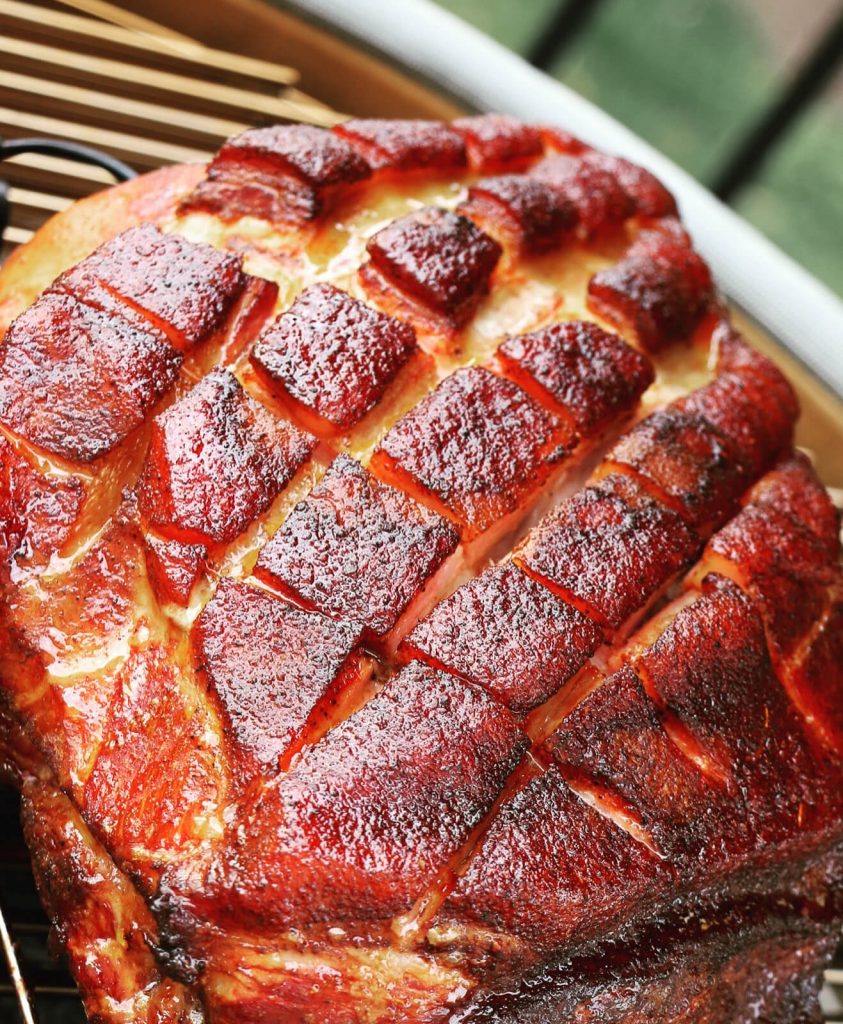
When using most pellet grills, this would likely change. There isn’t as much heat reflected from the lid of a pellet grill. Instead, more heat comes from the bottom of the smoker. So, when using a pellet grill I cook with the fat cap down, where the majority of heat is coming from.
How Long Does It Take To Smoke a Boston Butt on the Grill?
Smoked pork butt cooking at 225° – 250°F will usually require about 1.5 to 2 hours of cook time per pound of meat. That’s not an absolute, but it’s a good ballpark figure to go with when planning your cook.
Wrapping, which I will discuss later, can reduce the total cook time, but will affect the bark on the surface which is so important to the overall texture of the meat.
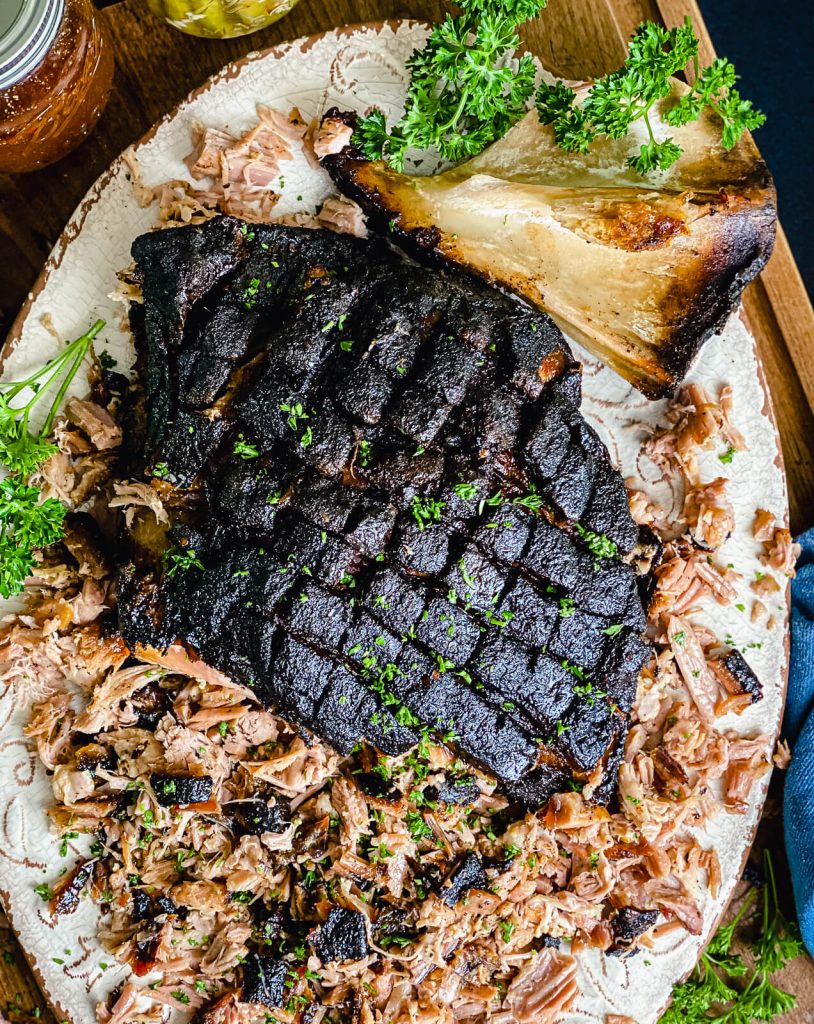
Do You Wrap Pork Shoulder in Foil When Smoking?
This is largely a personal choice. Some people will wrap the pork butt in butcher paper or aluminum foil at the point of the stall. I’ll talk more about the stall later.
In short, wrapping the pork shoulder helps to push through the stall more quickly. Some would even argue that wrapping also helps to tenderize the meat. That said, wrapping doesn’t come without a cost.
That cost is to the texture of the bark formed on the meat. This can be minimized by using butcher paper as opposed to foil, but both will change the texture of the bark and to some it’s worth it.
I don’t normally wrap pork like I do with brisket. I feel like I can get as tender of a pork shoulder without wrapping it, and I prefer the texture produced using this method. That said, if I’m rushed for time I will wrap on occasion.
If you decide to wrap the pork when it gets to the stall, just ensure the wrap is tight to the pork. Loose wrapping will lead to air pockets that will end up steaming the meat.
What Temperature Is Best To Smoke a Pork Butt?
You’ll hear all kinds of tips for this, from low and slow to hot and fast. For me, the perfect temperature for a pork shoulder is 225°F.
Sure you can go a bit hotter, into the 250°-275° range (or even higher) but at that cooking temperature the meat won’t be as tender.
Getting the big, tougher cuts of meat tender isn’t solely about the internal temp of the meat. It’s about a combination of time and temperature. Read on…
At What Temperature is Pork Butt Done?
This is a little tricky because there isn’t a bang on, right answer. Different pork butts will have slightly different amounts of connective tissue that needs to be broken down. That will result in the butt being done at between (roughly) 195°F and 205°F.
Getting back to my earlier statement about time and temperature. You could easily get the internal temperature of the pork shoulder to 205°F in just a few hours if you cooked it hot enough. But, the meat would be tougher than the East end of a bull heading West.
The connective tissue needs time to break down and become tender. The more connective tissue, the longer this takes. So, at 195°F, wiggle the bone in the shoulder. If it feels loose and ready to pull out without much resistance, the pork is ready.
If the bone is still tight, let it continue to cook till the temperature reaches closer to 205°F. Each shoulder is different, so you’ll have to make the judgment call.
Tips For Smoking Pork Butt
- Meat Prep: Scoring the pork fat cap allows the fat to render more easily, allows seasoning to get down into the meat, creates more surface area for the smoke to adhere to, and best of all provides some incredible pork snacks to munch on at the end of the process.
- The Binder: Using a binder is somewhat controversial these days on social media. Bottom line, the mustard binder isn’t going to provide any flavor. It’s simply used to assist with keeping the seasoning on the pork and to help build the bark.
- The Stall: You’ll notice the pork temperature will increase pretty steadily to about 150° or so, then it stagnates (and may even decrease) for a period of time. This stall happens when the meat tightens up enough to start squeezing juice to the surface. The juice causes some evaporative cooling which is responsible for the stall. Don’t worry, it’s normal.
- Appearance: Don’t be concerned that this looks burnt on the outside. That dark bark covering the pork shoulder is pure flavor and offers an amazing texture when mixed into the tender pulled pork.
How To Smoke Pork Butt On The Grill
Serves: 10-12 | Prep Time: 10 mins | Cook Time: 12-13 hours
Ingredients
1 6-8 lb pork shoulder
2 tbsp yellow mustard
⅓ cup BBQ Rub
2 cups East Carolina mop sauce
Step 1: Light your grill and set up for two-zone cooking. To the hot coals add one chunk of pecan and one chunk of apple wood. Establish temperature in the indirect zone at 225°F.
Step 2: While your grill is preheating, prepare the pork. Rinse it off under cold water, and pat dry with a paper towel. Set on your cutting board fat side up and score the fat cap in a cross-hatch pattern.
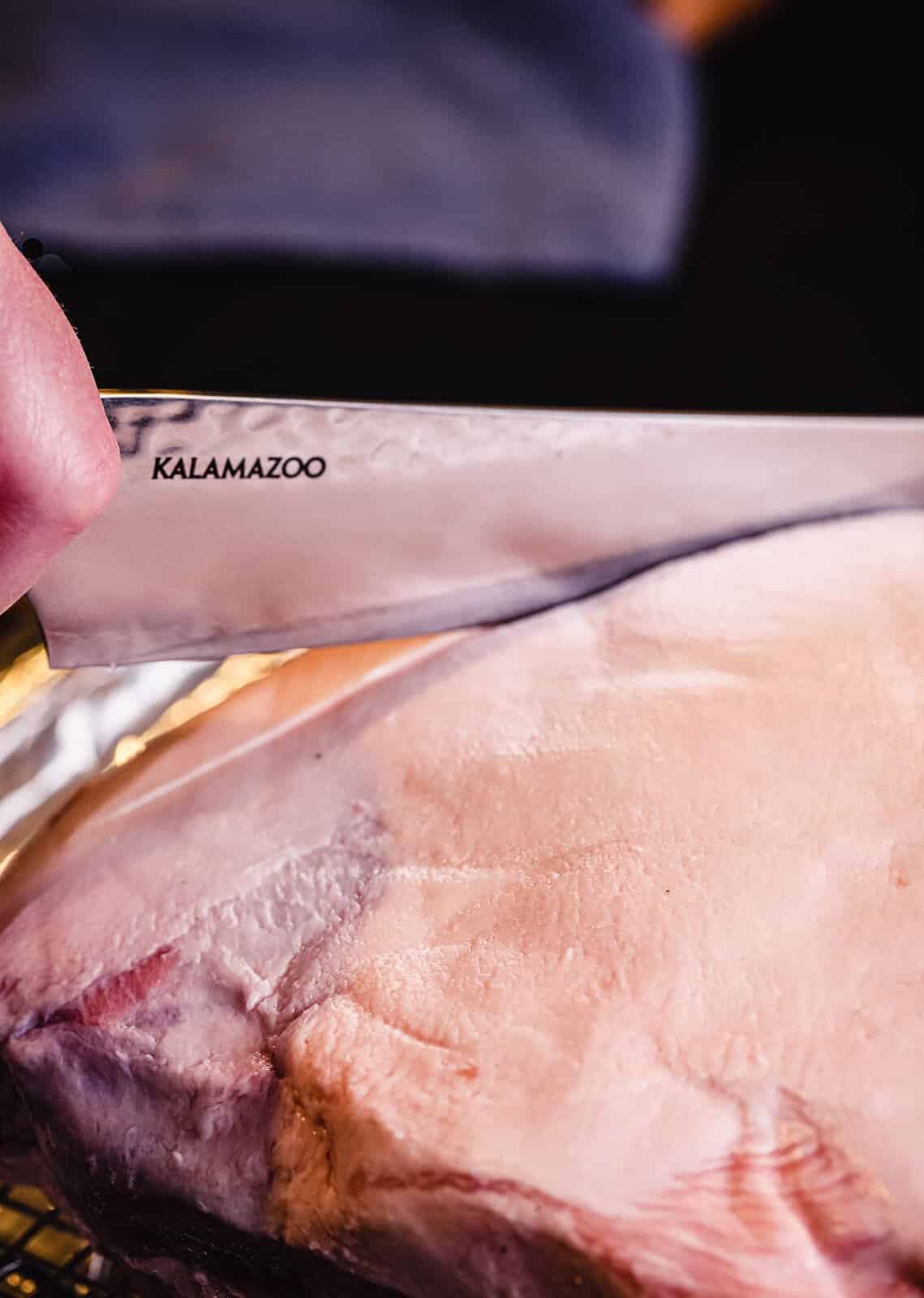
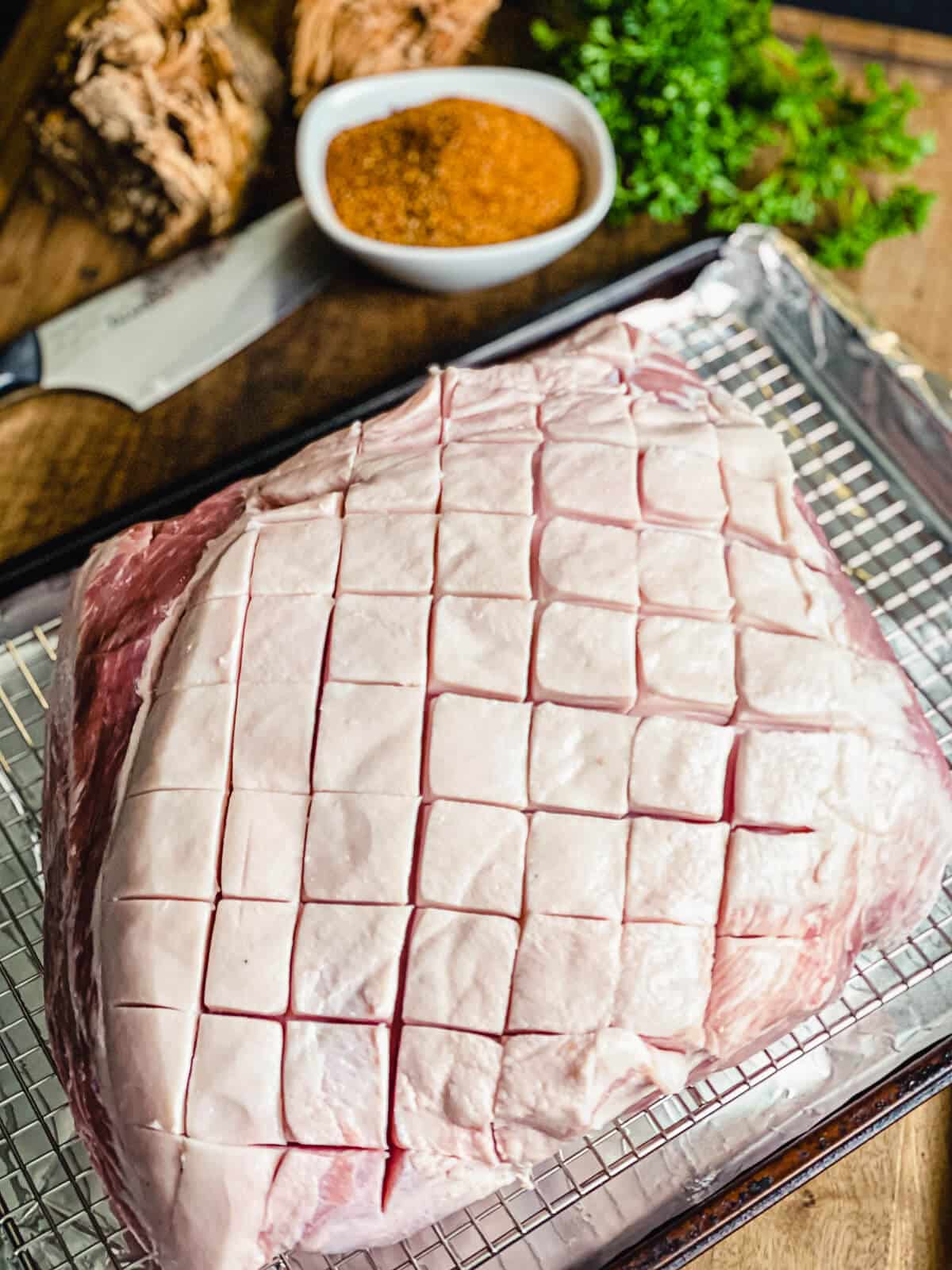
Step 3: Cover the entire pork shoulder with a thin coat of yellow mustard, then liberally apply the seasoning to the pork, ensuring you cover all sides. Allow the rub to sweat into the pork for 10-15 minutes.
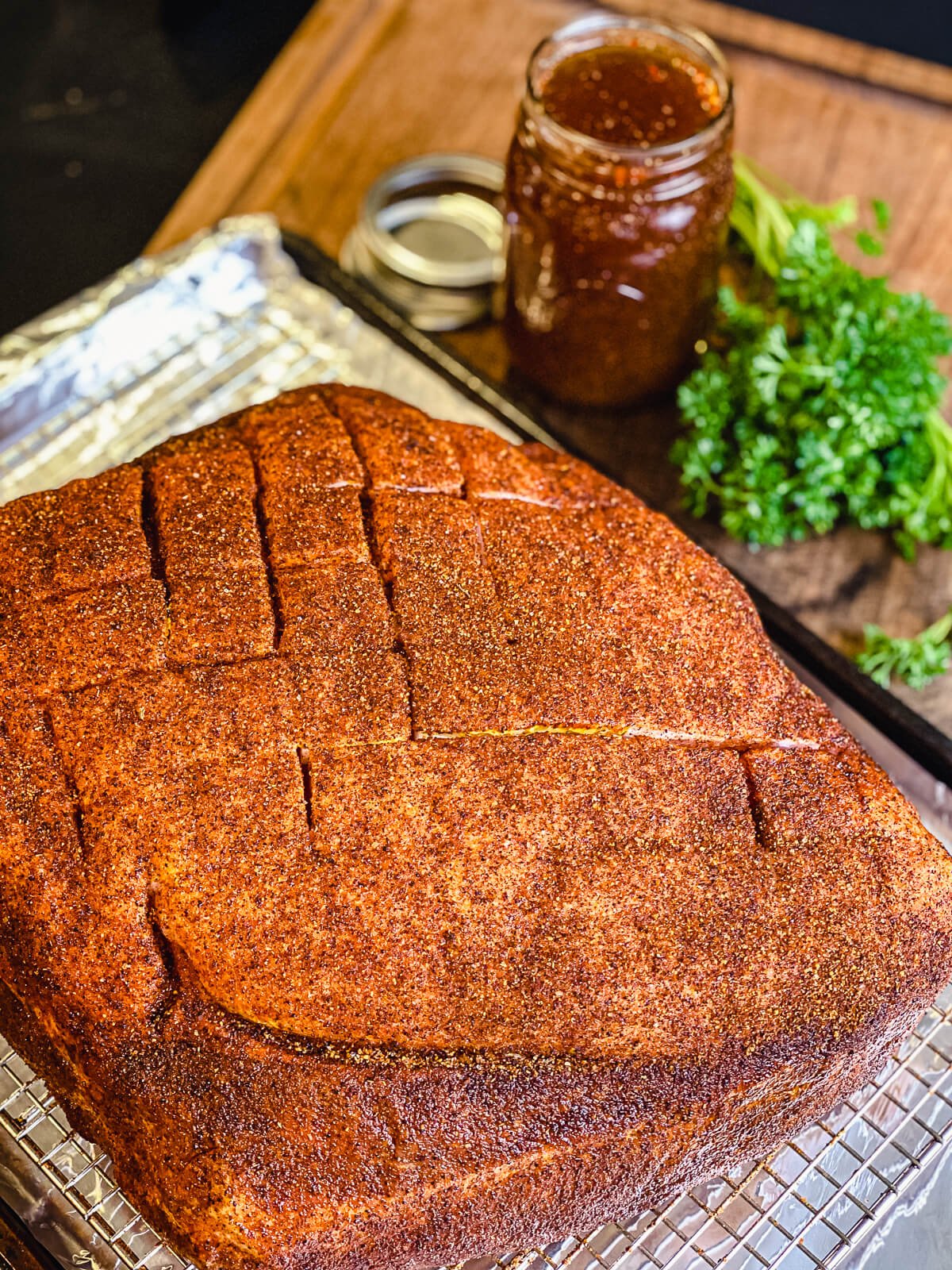
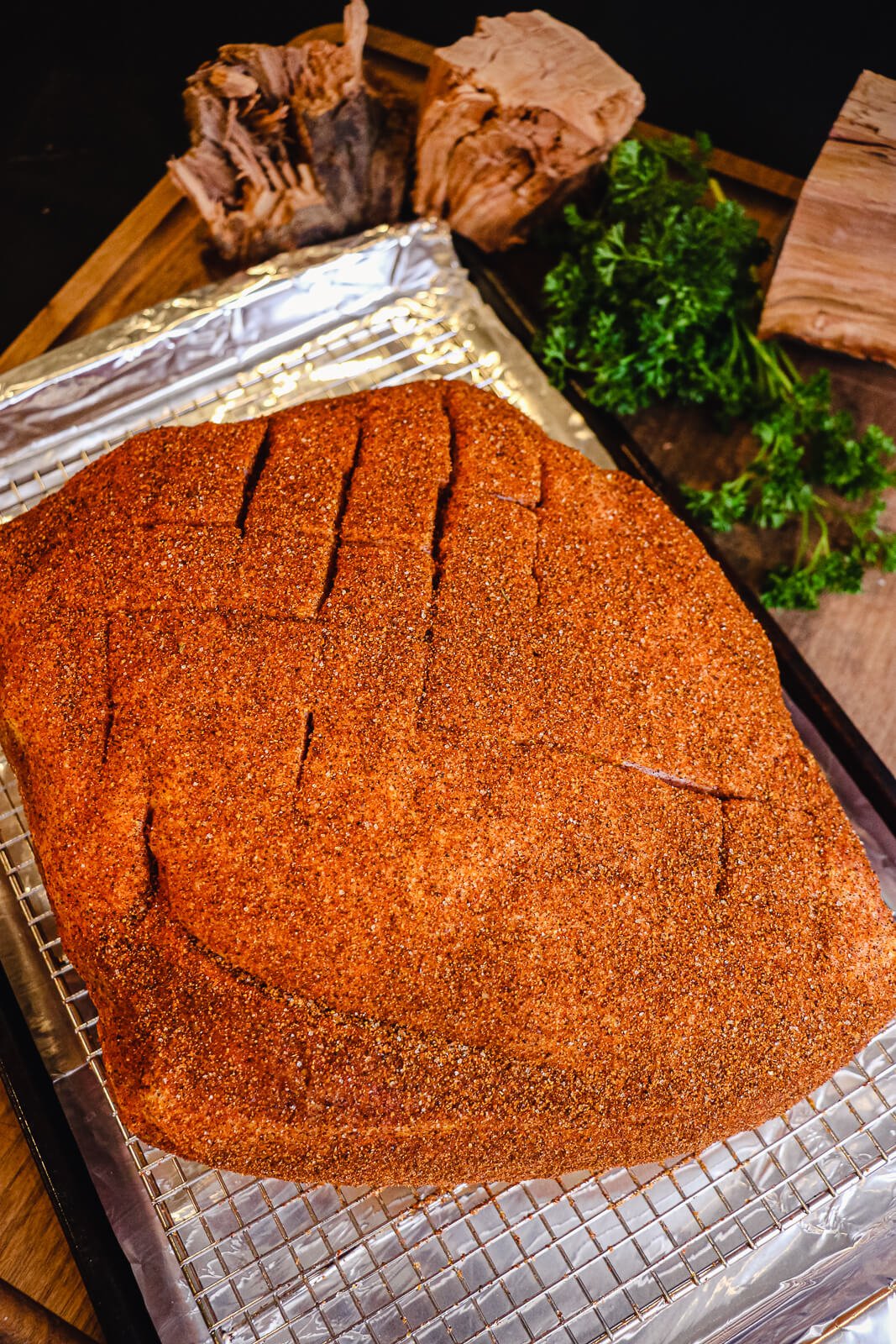
Tip* For ease of cleanup, I recommend lining an 11 X 17 inch cookie sheet with aluminum foil and then placing a wire cooling rack on the cookie sheet.
Step 4: Position the pork shoulder, fat side up on the cooling rack. Insert a reliable leave in meat thermometer probe into the center of the pork before placing the cookie sheet on the grill and closing the lid.
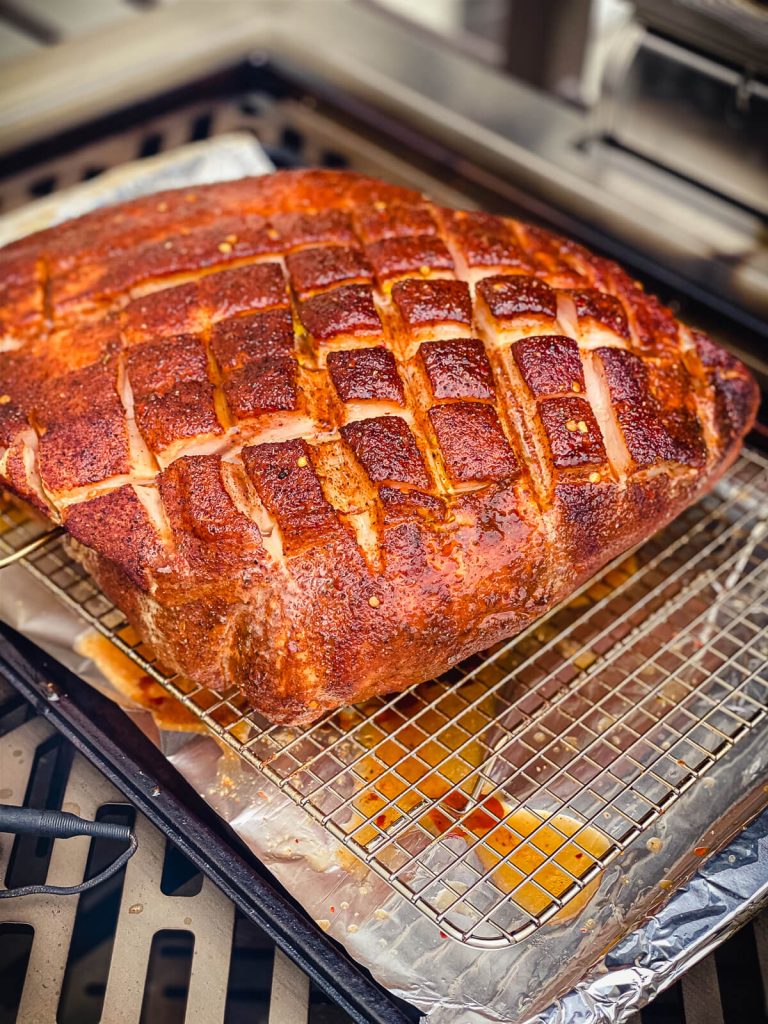
Step 5: After the pork has been on the grill for an hour, mop the meat’s surface with the Eastern Carolina mop sauce. Do this as quickly as possible as opening the lid to the grill supplies a rush of oxygen to the coals and will cause temperature spikes. Repeat this process every hour for six hours.
Step 6: After six hours of mopping, close the lid for the last time, and not disturb the shoulder until it’s reached an internal temperature of 195° F. Then wiggle the bone in the shoulder. If it feels like it’s ready to pull out without much resistance, the pork is ready. If the bone is still tight, let the pork continue to cook until the temperature reaches 205°F.
Step 7: Remove the pork from the grill, place it in a raised edge dish and tent it with aluminum foil, allowing it to rest for 60-90 minutes.
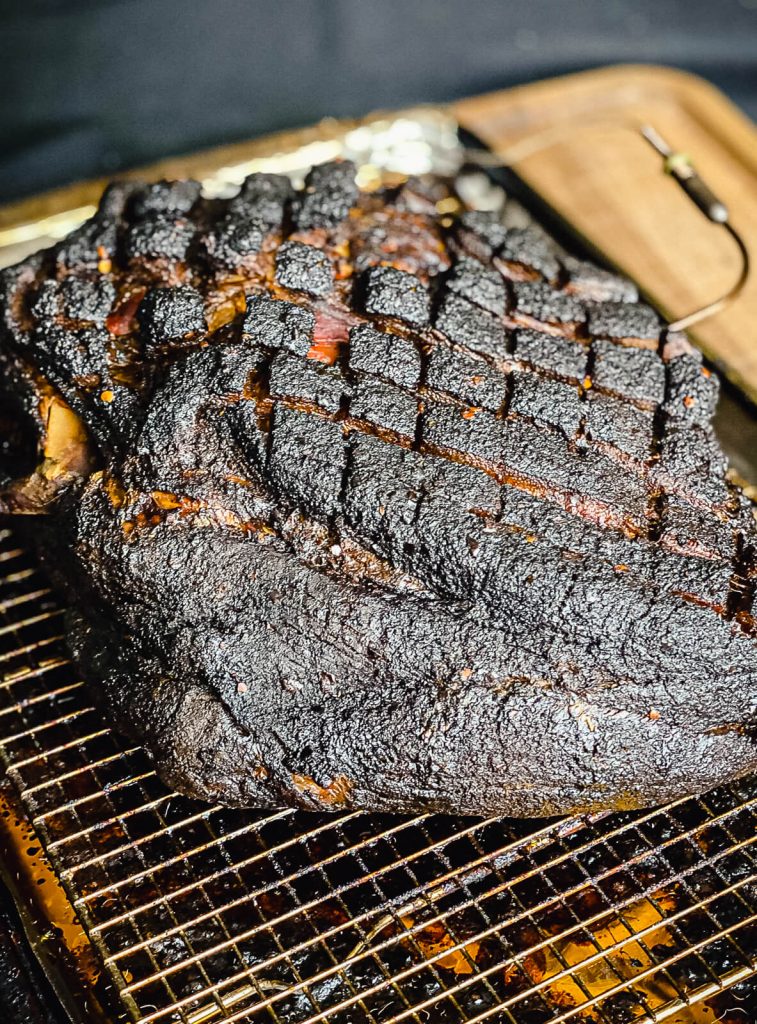
Step 8: Using some insulated gloves, pull the shoulder into a nice shredded texture and remove any inedible connective tissue. Top with reserved sauce and serve with some homemade pickled red onions.
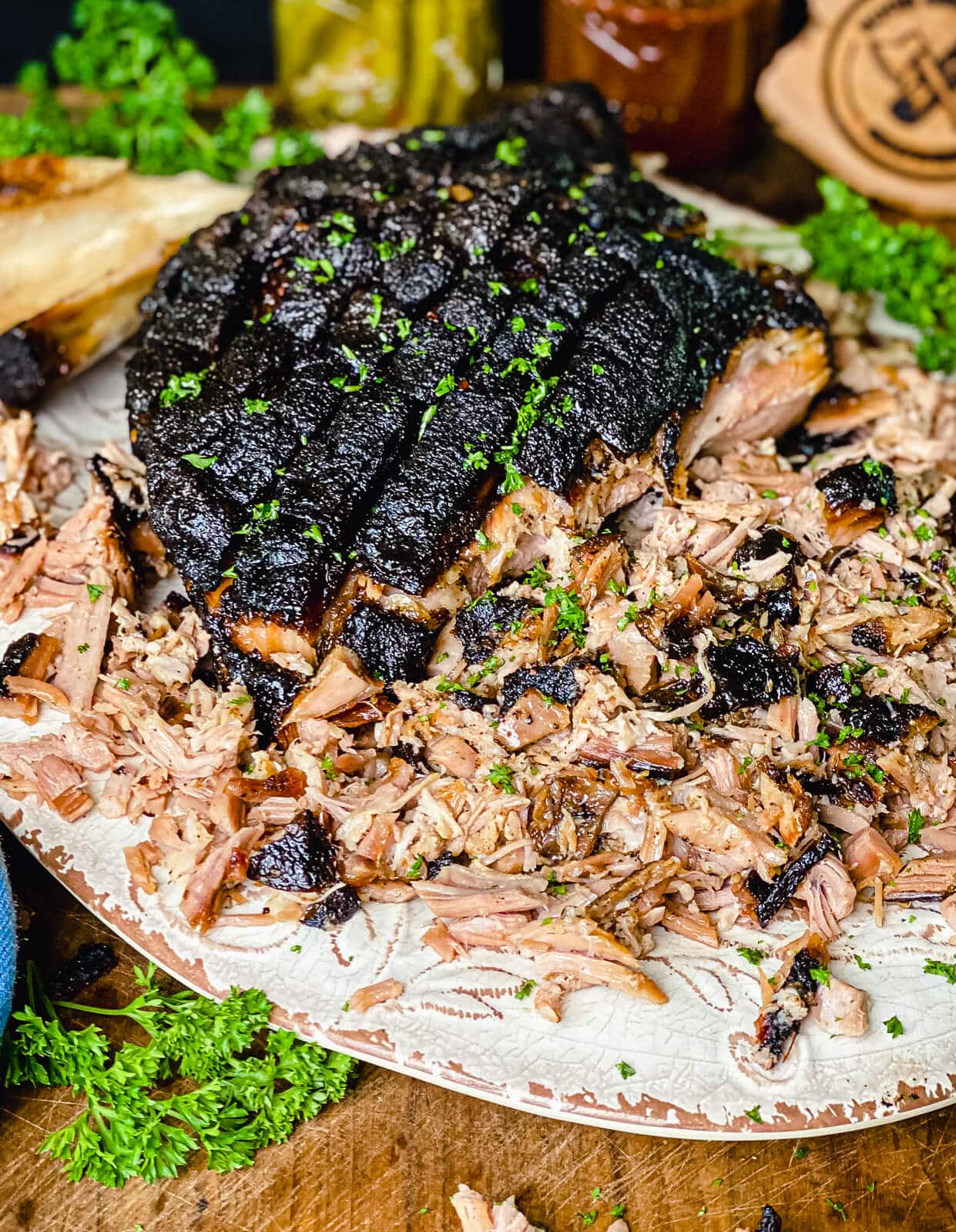
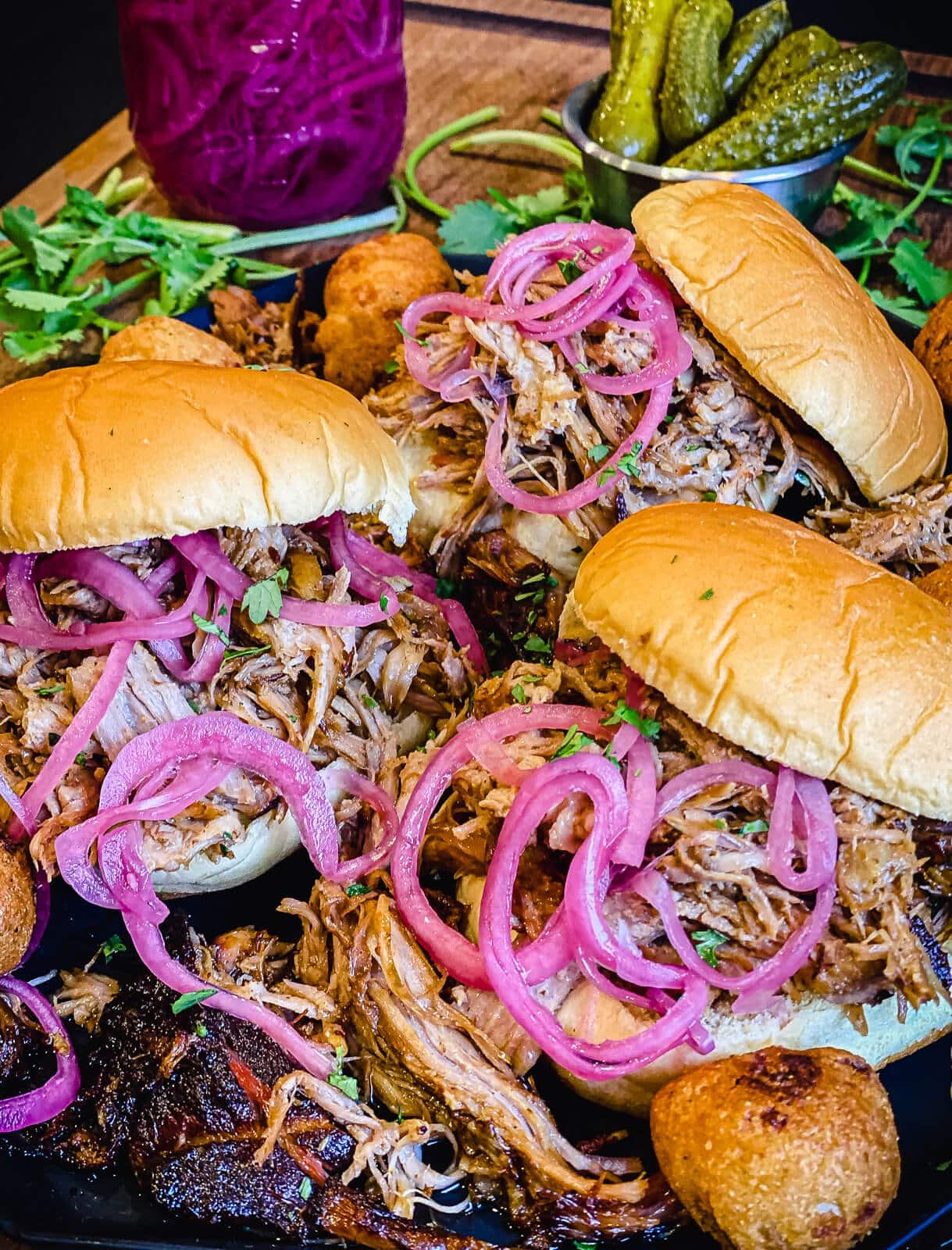
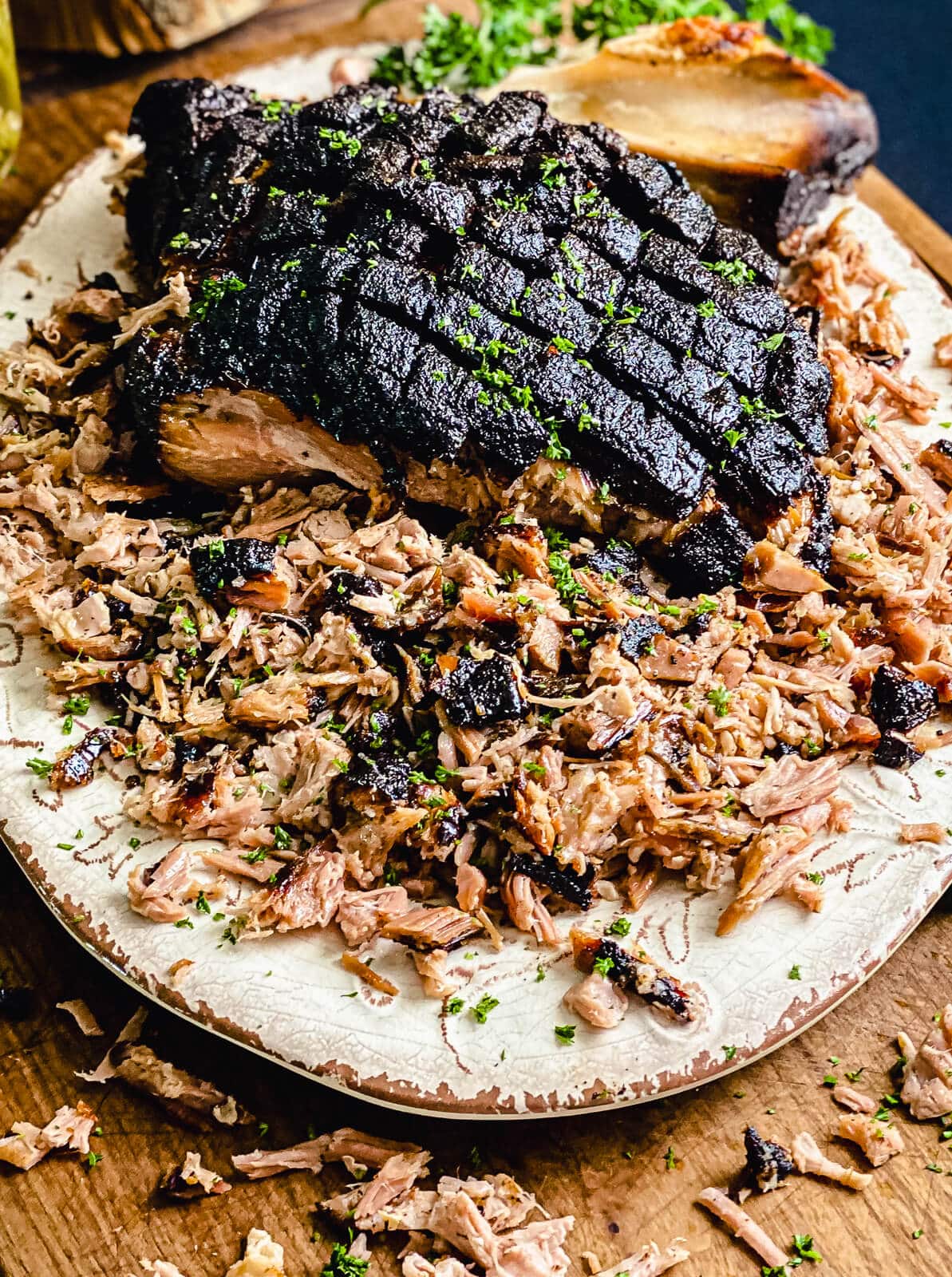
Ingredients
- 1 6-8 lb pork shoulder bone in
- 2 tbsp yellow mustard
- ⅓ cup BBQ Rub
- 2 cup East Carolina mop sauce
Instructions
- Light your grill and set up for two zone cooking. To the hot coals add one chunk of pecan and one chunk of apple wood. Establish temperature in the indirect zone at 225°F.
- While your grill is preheating, prepare the pork. Rinse it off under cold water, and pat dry with a paper towel. Set on your cutting board fat side up and score the fat cap in a cross-hatch pattern.
- Cover the entire pork shoulder with a thin coat of yellow mustard, then liberally apply the seasoning to the pork, ensuring you cover all sides.
- Position your seasoned pork shoulder, fat side up on the cooling rack. Insert a reliable leave in meat thermometer probe into the center of the pork before placing the cookie sheet on the grill. Close the lid on the grill and monitor grill temperature.
- After the pork has been on the grill for an hour, mop the meat’s surface with the Eastern Carolina mop sauce. Do this as quickly as possible as opening the lid to the grill supplies a rush of oxygen to the coals and will cause temperature spikes. Repeat this process every hour for six hours.
- After six hours of mopping, close the lid for the last time, and not disturb the shoulder until it’s reached an internal temperature of 195° F. Then wiggle the bone in the shoulder. If it feels like it’s ready to pull out without much resistance, the pork is ready. If the bone is still tight, let the pork continue to cook until the temperature reaches 205°F.
- Remove the pork from the grill, place it in a raised edge dish and tent it with aluminum foil, allowing it to rest for 60-90 minutes.
- Using some insulated gloves, pull the shoulder into a nice shredded texture and remove any inedible connective tissue. Top with reserved sauce and serve. This makes excellent sandwiches or can be eaten plain.


